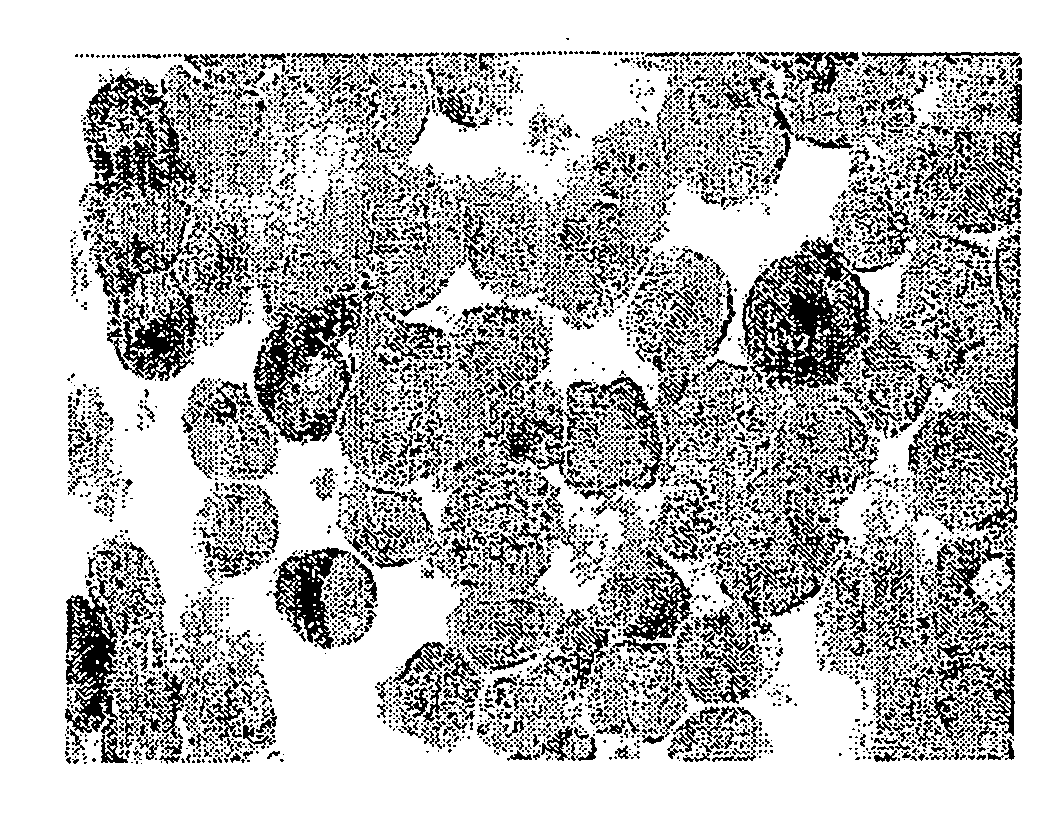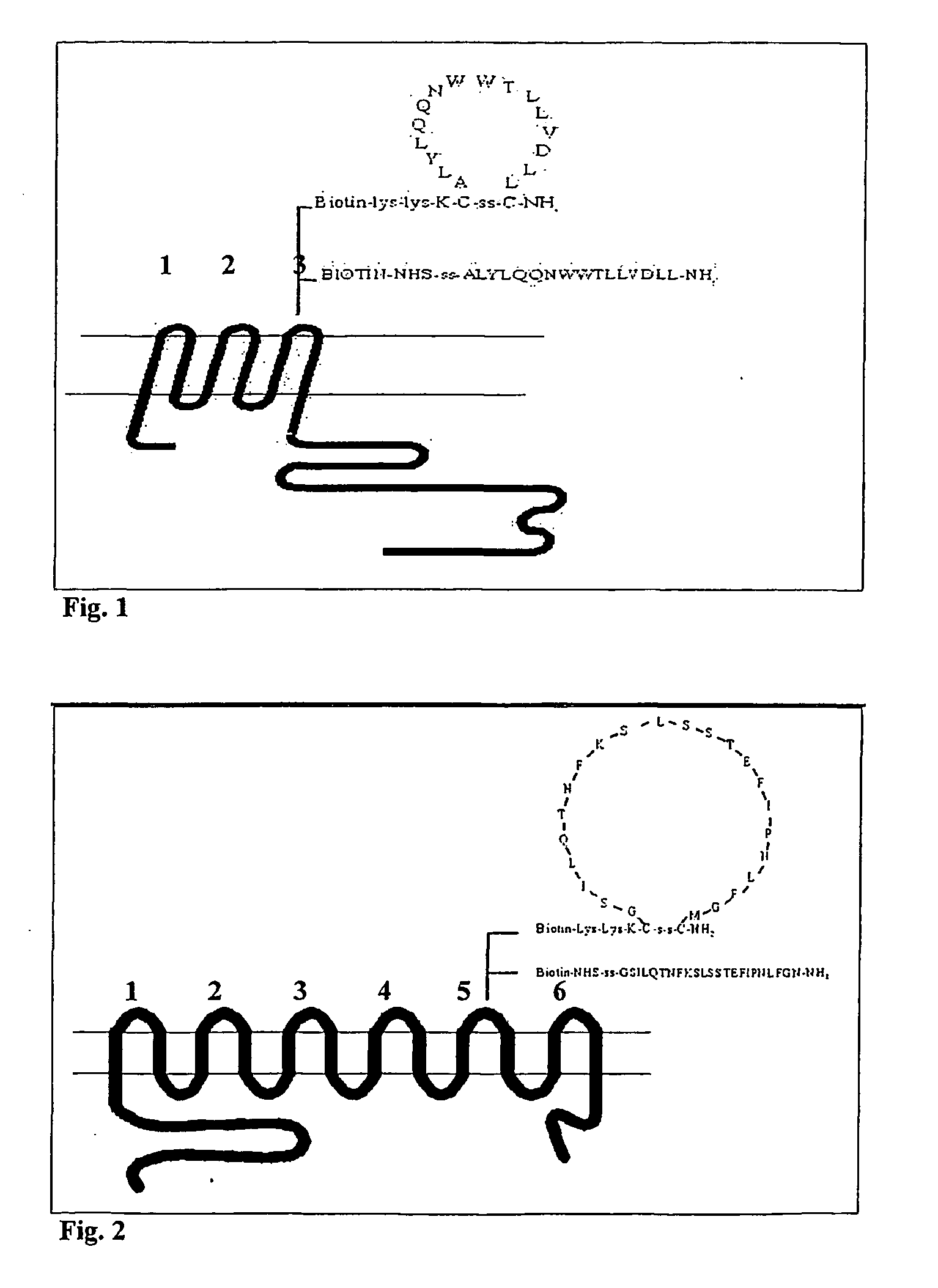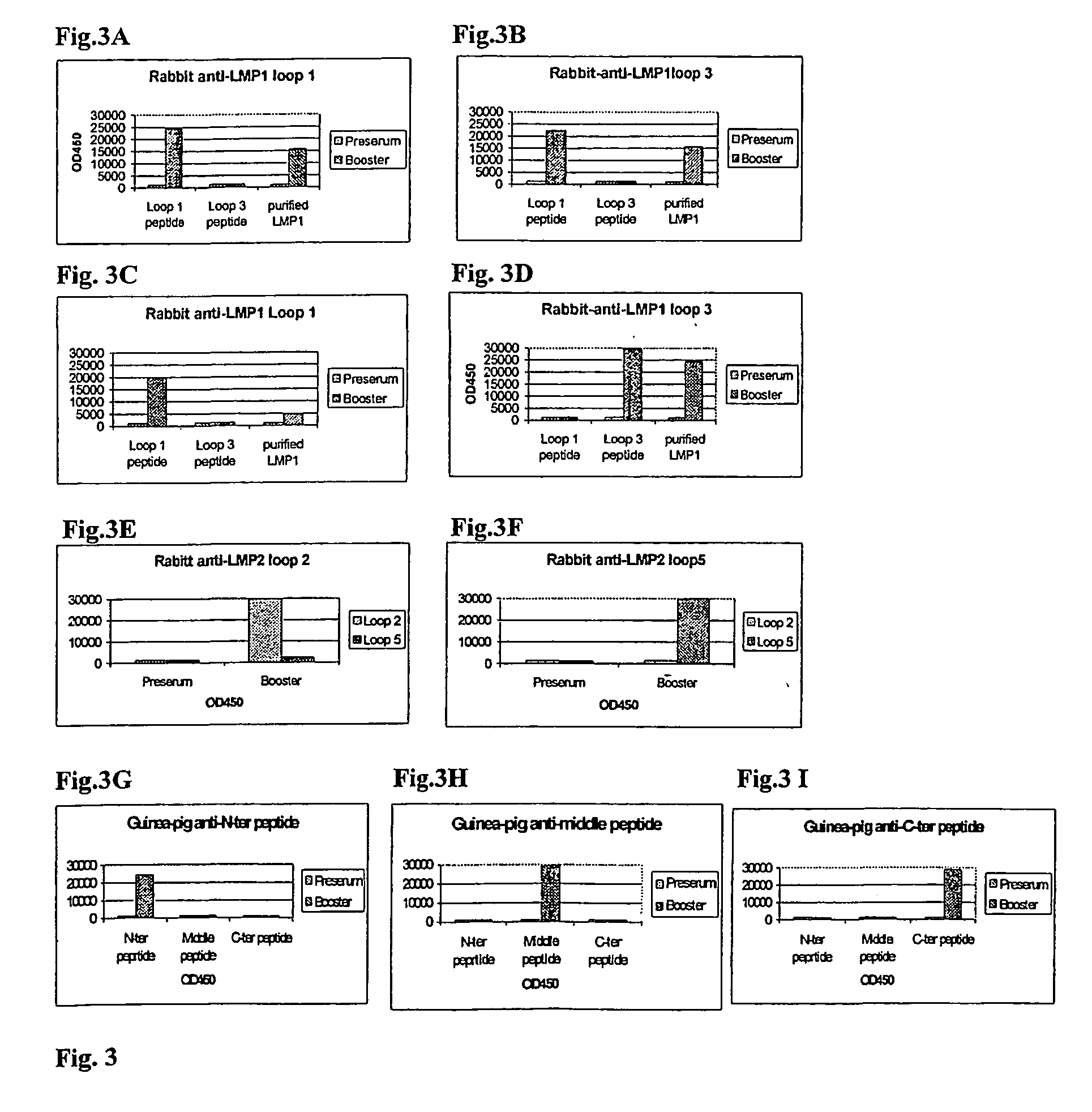Method for the identification of extracellular domains of Epstein Barr Virus (EBV) tumor-associated latent membrane proteins and for the selection of antibody reagents reactive therewith
a technology latent membrane protein, which is applied in the field of antibody reagents reactive therewith and the selection of extracellular domains of epstein barr virus (ebv) tumor-associated latent membrane proteins, can solve the problems of lymphoproliferation disease, full-blown malignancy, and detection of epithelial replication of the virus
- Summary
- Abstract
- Description
- Claims
- Application Information
AI Technical Summary
Problems solved by technology
Method used
Image
Examples
example 1
Design of LMP1, LMP2 and BARF1 Derived Peptides with a Putative Extracellular Localisation.
[0300] The amino acid sequences of LMP1, LMP2 and BARF1 were retrieved from the Swiss-Prot or Genbank database.
[0301] The aim was to define and demonstrate the existence of extracellular domains on these proteins as expressed in naturally infected and transformed (tumour) cells.
[0302] Thereto, as a first step the amino acid sequences derived from DNA encoding the LMP1, LMP2 and BARF1 proteins were used and the putative transmembrane domains were localised by hydrophobicity analysis using the GCG protein analysis program, supra.
[0303] This analysis revealed LMP1 to contain a hydrophilic N-terminus of about 20 amino acids followed by 6 subsequent hydrophobic domains, forming 6 repeated putative intra membrane helices connected by three short intracellular charged sequences and three putative extracellular domains, which are referred to as LMP1 loop -1, -2 and -3 (FIG. 1), then followed by a hydr...
example 2
[0312] Generation of Antibody Reagents Reactive with Putative Extracellular Domains of LMP1, LMP2 and BARF1 Proteins by Immunisation with Designated Putative Extracellular Domain-Specific Peptides and Demonstration of the Existence of these Extracellular Domains in EBV-Transformed Cell Lines.
[0313] There is no direct proof for the existence and accessibility of LMP1, LMP2 and BARF1 domains on the outer surface of naturally EBV-infected transformed (tumour) cells.
[0314] Therefore, the first aim was to create specific reagents that would define such domains and would allow the demonstration of the functional accessibility of these domains.
Methods:
[0315] Peptides were made using fMoc chemistry using a solid phase peptide synthesizer (Applied Biosystems, USA). Following acid cleavage from the resin, peptides were washed repeatedly with diethylether and purified by RP-HPLC (Beckman System Gold). When relevant, peptides were circularised by oxidising the sulphydroxy-groups. Finally peptid...
example 3
Generation of Human Antibody Reagents Reactive with the Putative Extracellular Domains of LMP1, LMP2 or BARF1 from a Human Phage-Antibody Library by Phage Display Selection with Synthetic Loop-Domain Specific Peptides.
[0340] The generation of mouse and / or rat monoclonal antibodies by animal immunisation and the hybridoma cell-fusion technique of Kohler and Milstein is well known. However, this methodology does not readily allow generation of human monoclonal antibodies, which are the preferred antibody reagents for in vivo (ex vivo) therapeutic applications. Since The LMP1, LMP2 and BARF1 proteins are hardly immunogenic in man (Meij et al. 1999), the production of human antibodies with specificity for the extracellular domains of LMP1, LMP2 and BARF1 is not straight forward.
[0341] Therefore, an alternative approach was tried by using the novel and specifically constructed (now defined) extracellular domain peptides, described in example 1 and 2, to select for specific human antibody...
PUM
| Property | Measurement | Unit |
|---|---|---|
| concentration | aaaaa | aaaaa |
| volume | aaaaa | aaaaa |
| pH | aaaaa | aaaaa |
Abstract
Description
Claims
Application Information
 Login to View More
Login to View More - R&D
- Intellectual Property
- Life Sciences
- Materials
- Tech Scout
- Unparalleled Data Quality
- Higher Quality Content
- 60% Fewer Hallucinations
Browse by: Latest US Patents, China's latest patents, Technical Efficacy Thesaurus, Application Domain, Technology Topic, Popular Technical Reports.
© 2025 PatSnap. All rights reserved.Legal|Privacy policy|Modern Slavery Act Transparency Statement|Sitemap|About US| Contact US: help@patsnap.com



